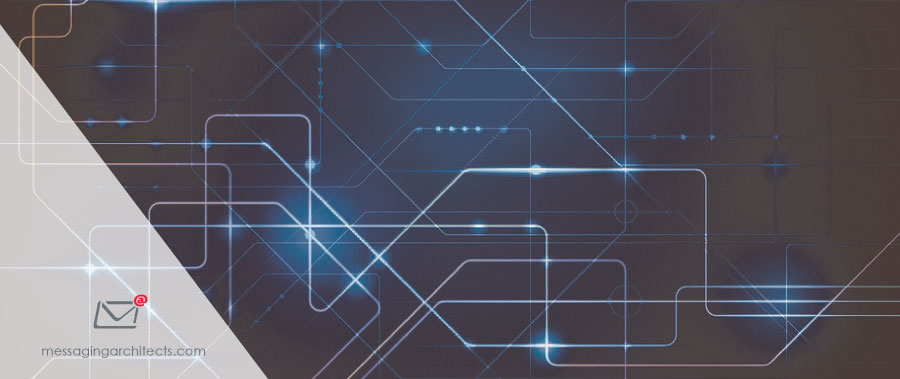Email etiquette tips from Greg Smith
Most organizations provide their employees with a corporate email address and email services. Email is pervasive across the organization. And, because it bears the name of the company, it can bring risk if improperly used. Thus, proper email etiquette should be taught and practiced.
The words Email and Communication are not always synonymous.
Just like language, email is a communication tool as well as a conveyance for other types of information. Communication is sometimes a precarious thing and miscommunication a great source of friction and potential mistakes.
While it is impossible to train individuals in the art of communication, it is possible to attempt to alleviate some areas of contention through proper email use training and guidelines. The following are a good example of items that govern the use of email as a business communication tool.
Email Etiquette
Your email communication reflects on you. So, its use can be important in polishing or tarnishing your reputation both within and without the organization.
- Remember you cannot take it back. When you are emotionally distraught there is an urge to express that in an email. So, if you must write it, do not send it. Come back to it later when clearer minds can avoid potential repercussions.
- Avoid the “Reply-to-All”. Its sometimes better to reply to the sender and let them disseminate the information rather than flooding everyone’s mailboxes.
- Use of CAPITALIZED words or a lot of BOLD invokes emotion and is generally regarded as SHOUTING in email which can cause emotional reaction from recipients.
- Use prioritization sparingly. Just as with the little boy that cried wolf, if you tag a lot of messages with high priority, recipients start to regard those messages with less priority as time goes on.
- Use of Addressing fields is important. The TO: field generally imparts a direct communication to the recipient as if you were talking to their face at a party. This is the person you expect to read the message and get a direct response from. If you do not expect a direct response or are including someone, “For your Information,” then place them in the CC: field as this will help them prioritize when they read the message.
- Careful use of the Blind Carbon Copy field (BCC). This allows someone to share information with you without letting the rest of the addressees know you have been included. Replying to ALL for this message can be an embarrassment to the sender as it lets all know that you have been included.

Email Etiquette (Continued)
- Avoid playing ping pong with your messages. We have all seen those messages back and forth that fill your inbox with clarifications and acknowledgements. Sometimes it’s better to simply communicate with different tools such as Instant Messaging, Telephone or in person.
- Communicate concisely. Read your email before sending it to avoid confusing content or ambiguous information. Spending a few extra moments to include your thoughts can save a lot of time from having to play email ping pong.
- Use humor carefully. Written communication can be misinterpreted easily so be clear. If you must use levity or humor, an Emote Icon can help convey that.
- Always proof your email for spelling and grammar before you send it. It adds professionalism.
- Avoid writing the next great novel. With the average person getting or sending 100 emails per day, try and summarize the email within the first few lines. Leave the rest for clarity and added information.
- Formulate your subject with some thought. It is easy to reply to one topic and talk about another. That makes it hard to find the message later as the subject doesn’t match the topic. Also, a descriptive subject can help generate a better response for your messages.
- Do not expect instantaneous responses from your email. Email is not a primary job function and therefore many people may not be monitoring their email fastidiously. If you require interactive communication, use telephones, instant messaging or direct communication.
- Clean your messages from all non-relevant replies in the message. Send the message with pertinent information.
- Always be professional. If your company allows limited personal use of your email, understand that you are still obligated to communicate in a professional manner representative of the organization. Do not use to distribute your opinions, viewpoints, hobbies or humor as not everyone may agree.
Email Use Expectations
- Unlike FAX machines, telephones and instant messaging, email is like regular postal service. The message is sent from site to site until it hopefully makes it to the destination. The message might get lost or trapped in a SPAM filter along the way.
Do not treat email as guaranteed delivery. Follow up on all time sensitive information through a different communication medium to confirm delivery.
- Graphics and Tables are always a nice way to brighten a message or illustrate your point. But, know that while your peers inside the company can see those graphics, individuals outside your organization will usually have them blocked or their email client may not support them.
Being Safe
- Check your address list before you hit send. Modern email clients provide cached recipients, so it is easy to just start typing their names and the address populates in the message. Too frequently, a rush to send the message can inadvertently send the message to the wrong individuals.
- Just because someone who telephones you says they are from the Internal Revenue Service doesn’t mean they are. Similarly, with email, never transfer personal information, passwords or money based on an email. Initiate the contact with that organization through independent means including web browser or telephone.
- What sounds too good to be true usually is. While it may not be malicious, clicking on links is a way to get yourself on thousands of different mailing lists or worse. Confirm the validity of the sender before you click on those links.
- Remember that email can be forwarded, copied and shared with just about anyone. So, remember this before you share your innermost secrets or sensitive information.
Email etiquette is not only about using the technology appropriately, but it also serves to improve communication and productivity and to create a positive work environment. Organizations should strive to teach their employees through awareness advertising, training and positive attitude campaigns.







